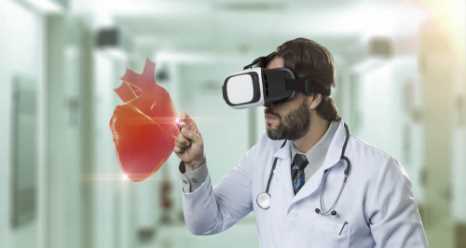Virtual Reality (VR) has revolutionized various industries, from gaming and entertainment to healthcare and education. It offers a simulated environment that immerses users in a digital world, providing a unique sensory experience. While VR has gained significant popularity, it is essential to understand its impact on human health. In this comprehensive analysis, we delve into the potential benefits and risks associated with virtual reality and its influence on our well-being.
Positive Impact on Mental Health:
Therapeutic Applications: Virtual reality has been used effectively in therapeutic settings to treat mental health conditions such as anxiety disorders, phobias, and post-traumatic stress disorder (PTSD). By exposing individuals to controlled virtual environments, clinicians can create a safe space for exposure therapy, helping patients confront and overcome their fears.
Stress Reduction and Relaxation: VR experiences have proven effective in reducing stress levels and inducing relaxation. Through guided virtual environments, individuals can escape their daily pressures and immerse themselves in calming experiences, promoting mental well-being and overall stress management.
Cognitive Enhancement: Virtual reality applications are increasingly being used for cognitive training and rehabilitation. By engaging users in challenging mental tasks and exercises, VR can improve cognitive functions such as memory, attention, and problem-solving abilities. These interventions have shown promise in enhancing cognitive performance among older adults and individuals with cognitive impairments.
Physical Health Benefits:
Rehabilitation and Physical Therapy: Virtual reality technology provides a dynamic platform for rehabilitation and physical therapy. Patients recovering from injuries or stroke can engage in interactive exercises that promote movement, balance, and coordination. VR-based rehabilitation has shown positive outcomes and higher patient motivation compared to traditional methods.
Pain Management: VR has the potential to alleviate pain and discomfort by diverting the patient's attention away from the physical sensations. Studies have demonstrated its effectiveness in reducing acute pain during medical procedures, such as wound dressing changes or dental treatments, creating a more positive experience for patients.
Enhanced Fitness Experiences: VR fitness games and applications offer an immersive and engaging workout experience. These platforms provide a fun and interactive way to stay physically active, promoting cardiovascular health, strength, and endurance. By combining exercise with virtual environments, individuals are more likely to adhere to their fitness routines.
Potential Risks and Considerations:
Motion Sickness and Disorientation: Some individuals may experience motion sickness, dizziness, or disorientation when using VR. This can be attributed to a mismatch between visual and vestibular cues. While advancements in VR technology have reduced these issues, it is crucial to take breaks, limit exposure, and gradually acclimate to virtual environments.
Eye Strain and Vision Problems: Prolonged use of VR headsets may lead to eye strain, fatigue, and discomfort. However, modern headsets have improved optics and ergonomic designs to minimize these effects. Users should follow guidelines regarding screen time, take breaks, and ensure proper headset adjustments to protect their visual health.
Social Isolation: Excessive use of VR can potentially lead to social isolation if individuals prioritize virtual interactions over real-world connections. Maintaining a balance between virtual experiences and social relationships is crucial for overall well-being.
Conclusion:
Virtual reality presents a wide range of opportunities for improving human health. From mental health therapies to physical rehabilitation and fitness, VR has shown promise as a powerful tool in various healthcare domains. Nonetheless, it is vital to approach VR usage with caution, understanding and mitigating potential risks. With ongoing advancements in technology and increased awareness, virtual reality has the potential to continue positively impacting human health and well-being in the years to come.




Leave Comment